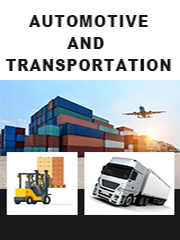Report overview
Auto Suspension System is the vehicle frame and the axle or between the wheels of all power transmission device connected to the general term, its role is to transfer between the wheel and the frame force and torque, and the buffer from the uneven road surface to the frame Or body impact, and attenuate the resulting vibration to ensure that the car can run smoothly. Typical suspension system structure consists of elastic elements, guide mechanisms and shock absorbers and other components, the individual structure is also a buffer block, lateral stabilizer bar. The elastic elements are leaf springs, air springs, coil springs and torsion bar springs and other forms, and modern sedan suspension system and more use of helical springs and torsion bar springs, individual limousine is the use of air springs.
This report aims to provide a comprehensive presentation of the global market for Auto Suspension System, with both quantitative and qualitative analysis, to help readers develop business/growth strategies, assess the market competitive situation, analyze their position in the current marketplace, and make informed business decisions regarding Auto Suspension System. This report contains market size and forecasts of Auto Suspension System in global, including the following market information:
Global Auto Suspension System Market Revenue, 2018-2023, 2024-2029, ($ millions)
Global Auto Suspension System Market Sales, 2018-2023, 2024-2029, (K Units)
Global top five Auto Suspension System companies in 2022 (%)
The global Auto Suspension System market was valued at US$ 42150 million in 2022 and is projected to reach US$ 54120 million by 2029, at a CAGR of 3.6% during the forecast period. The influence of COVID-19 and the Russia-Ukraine War were considered while estimating market sizes.
China is the largest Auto Suspension System market with about 25% market share. Europe is follower, accounting for about 22% market share.
The key players are Mando, Sachs(ZF), ThyssenKrupp, Tenneco, Magneti Marelli, Benteler, Dongfeng Motor Suspension, Wanxiang Qianchao, Hendrickson, F-TECH, WABCO, Fawer Automotive Parts, Fangzheng Machinery, Shanghai Komman, Hongyan Fangda etc. Top 3 companies occupied about 20% market share.
We surveyed the Auto Suspension System manufacturers, suppliers, distributors and industry experts on this industry, involving the sales, revenue, demand, price change, product type, recent development and plan, industry trends, drivers, challenges, obstacles, and potential risks.
Total Market by Segment:
Global Auto Suspension System Market, by Type, 2018-2023, 2024-2029 ($ Millions) & (K Units)
Global Auto Suspension System Market Segment Percentages, by Type, 2022 (%)
Independent Auto Suspension System
Non-independent Auto Suspension System
Global Auto Suspension System Market, by Application, 2018-2023, 2024-2029 ($ Millions) & (K Units)
Global Auto Suspension System Market Segment Percentages, by Application, 2022 (%)
Passenger Car
LCV-Light Commercial Vehicle
HCV-Heavy Commercial Vehicle
Global Auto Suspension System Market, By Region and Country, 2018-2023, 2024-2029 ($ Millions) & (K Units)
Global Auto Suspension System Market Segment Percentages, By Region and Country, 2022 (%)
North America
US
Canada
Mexico
Europe
Germany
France
U.K.
Italy
Russia
Nordic Countries
Benelux
Rest of Europe
Asia
China
Japan
South Korea
Southeast Asia
India
Rest of Asia
South America
Brazil
Argentina
Rest of South America
Middle East & Africa
Turkey
Israel
Saudi Arabia
UAE
Rest of Middle East & Africa
Competitor Analysis
The report also provides analysis of leading market participants including:
Key companies Auto Suspension System revenues in global market, 2018-2023 (Estimated), ($ millions)
Key companies Auto Suspension System revenues share in global market, 2022 (%)
Key companies Auto Suspension System sales in global market, 2018-2023 (Estimated), (K Units)
Key companies Auto Suspension System sales share in global market, 2022 (%)
Further, the report presents profiles of competitors in the market, key players include:
Mando
Sachs (ZF)
ThyssenKrupp
Tenneco
Magneti Marelli
Benteler
Dongfeng Motor Suspension
Wanxiang Qianchao
Hendrickson
F-TECH
WABCO
Fawer Automotive Parts
Fangzheng Machinery
Shanghai Komman
Hongyan Fangda
Outline of Major Chapters:
Chapter 1: Introduces the definition of Auto Suspension System, market overview.
Chapter 2: Global Auto Suspension System market size in revenue and volume.
Chapter 3: Detailed analysis of Auto Suspension System manufacturers competitive landscape, price, sales and revenue market share, latest development plan, merger, and acquisition information, etc.
Chapter 4: Provides the analysis of various market segments by type, covering the market size and development potential of each market segment, to help readers find the blue ocean market in different market segments.
Chapter 5: Provides the analysis of various market segments by application, covering the market size and development potential of each market segment, to help readers find the blue ocean market in different downstream markets.
Chapter 6: Sales of Auto Suspension System in regional level and country level. It provides a quantitative analysis of the market size and development potential of each region and its main countries and introduces the market development, future development prospects, market space of each country in the world.
Chapter 7: Provides profiles of key players, introducing the basic situation of the main companies in the market in detail, including product sales, revenue, price, gross margin, product introduction, recent development, etc.
Chapter 8: Global Auto Suspension System capacity by region & country.
Chapter 9: Introduces the market dynamics, latest developments of the market, the driving factors and restrictive factors of the market, the challenges and risks faced by manufacturers in the industry, and the analysis of relevant policies in the industry.
Chapter 10: Analysis of industrial chain, including the upstream and downstream of the industry.
Chapter 11: The main points and conclusions of the report.
